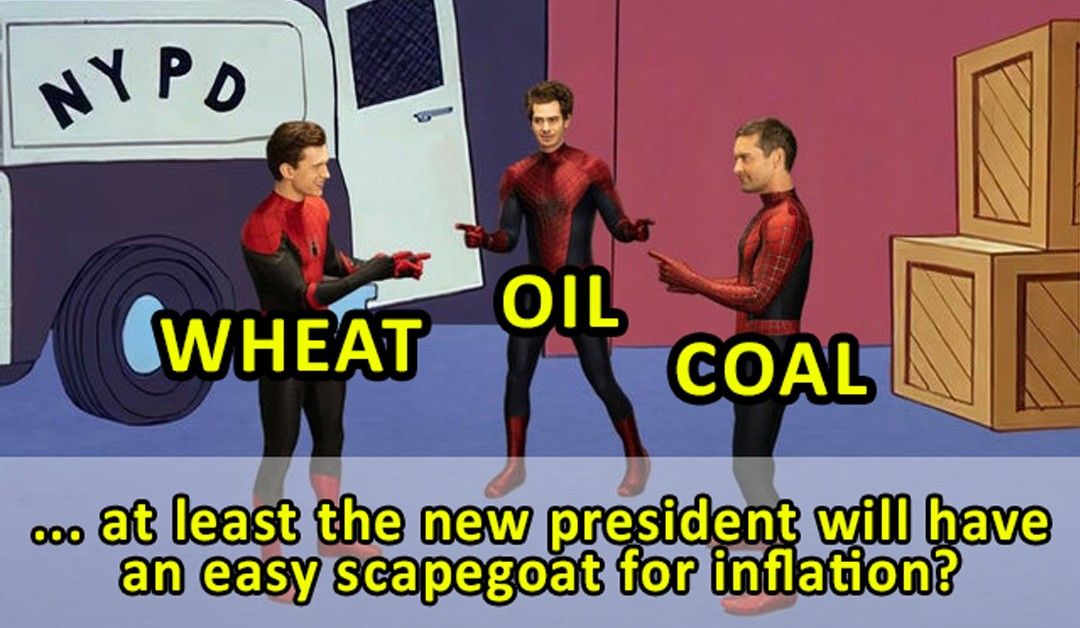War is (still) doing insane things to the commodities markets

The Russian invasio
Some of the commodities that are impacted are obvious and one-dimensional: Ukraine is the “breadbasket” of Europe and is a major exporter of corn, wheat, flour, and other base ingredients used in making food. It’s been invaded, so the supplies from Ukraine in those commodities are at risk.
But there are also impacts that are far less obvious that still could have a huge impact on the world, such as neon gas.
Up to 50% of the world’s supply of neon gas comes from the combined capacity of Ukraine and Russia. Neon gas is a critical component of the semiconductor manufacturing process.
The world is already experiencing huge supply chain issues due to an under-supply of microchips.
And these are only the first-order effects; imagine what second-order effects could rear their heads 6 months or a year from now if this conflict is still ongoing, or has blossomed into a truly gruesome larger conflict.
The top-performing companies from yesterday’s trading session were all natural resources stocks positioned in mining, oil, and mineral exploration.
Coal Asia [COAL 0.32 21.15%] jumped over 20%. ACE Enexor [ACEX 28.00 11.33%] jumped over 11%. Vulcan Industrial [VUL 1.12 10.89%] was up just under 11% as well.
I don’t have any crystal ball predictions of what will happen, I’m just trying to explain, in part, why there has been such a rush into stocks from these sectors.
MB BOTTOM-LINE
I’m not going to play armchair general and predict how the machinery of war will operate and how this conflict will end.
The truth is, nobody has any idea what is going to happen next, and for how long whatever does happen will happen for.
That’s really what is at the heart of these huge price swings that we’ve talked about in oil and coal. Huge global suppliers are in conflict, their supply is in jeopardy, and all of the countries, industries, and companies that depend on these commodities have scrambled to buy what they can while they still can.
Should there be any de-escalation of the conflict, the $435/tonne coal price will absolutely crumble and everyone who bought at that price will look silly as the price per tonne trades at 50% or 75% discounts from that price.
However, if the conflict goes sideways -- if NATO engages, or if China does literally anything out of the ordinary -- that price is probably going to look cheap by comparison to the “new” spot price that buyers will be faced with as tensions escalate.
A great example of this is Semirara Mining and Power [SCC 32.70 7.57%]; the high price of coal is obviously good for SCC, as they extract coal and sell it on the open market, but $435/tonne coal is only good for SCC for as long as coal is $435/tonne.
Peaking to $435/tonne for a couple of weeks then dropping back to $100/tonne for the rest of the year won’t support a huge price jump in the stock’s price.
It’s a different story, however, if the price of coal stabilizes around this price point and remains here for a couple of months or even a couple of quarters.
--

Merkado Barkada's opinions are provided for informational purposes only, and should not be considered a recommendation to buy or sell any particular stock. These daily articles are not updated with new information, so each investor must do his or her own due diligence before trading, as the facts and figures in each particular article may have changed.
- Latest

























